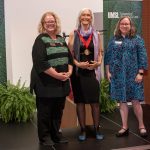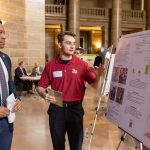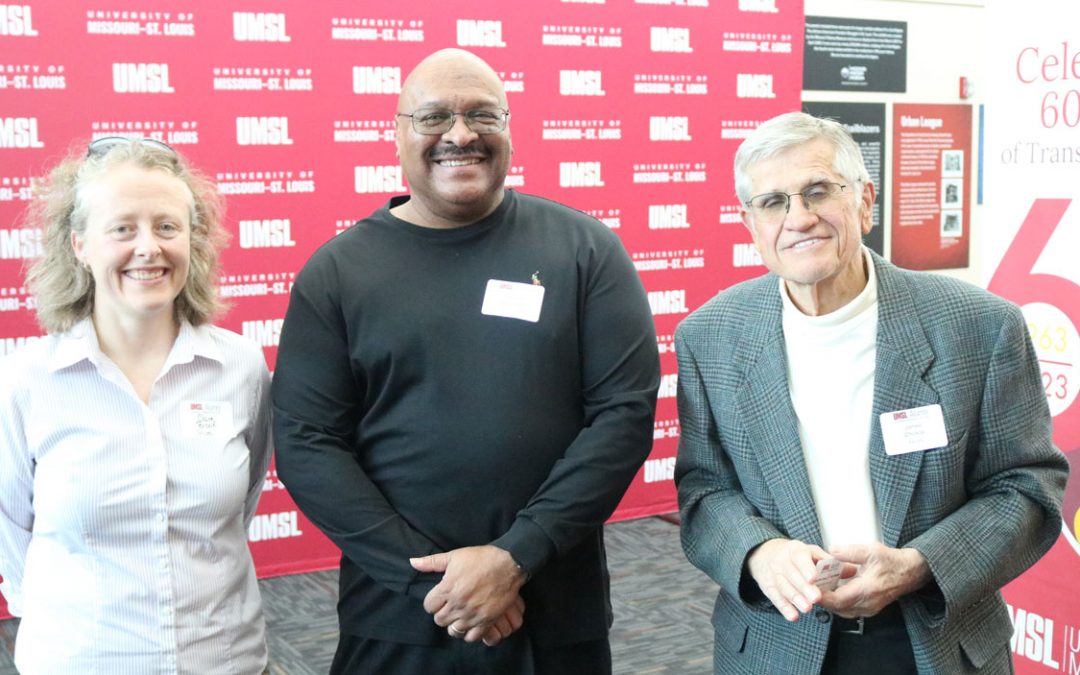
This Dryas iulia, commonly known as the Julia butterfly, is one of the two passionflower butterflies recent graduate Gyanpriya Maharaj researched for her doctoral dissertation. She graduated last December with her PhD in biology from UMSL and returned home to assume the role of director at the Centre for the Study of Biological Diversity at the University of Guyana. (Photos courtesy of Gyanpriya Maharaj)
Growing up to become a butterfly expert seems like the fulfillment of many little girls’ dreams, but for Gyanpriya Maharaj, it’s so much more than appreciating pretty patterns and dancing wings.
“The butterflies that I have chosen to work with are pollinators,” said Maharaj, who studied the flying beauties for her doctoral research in biology at the University of Missouri–St. Louis. “Currently, pollinators are threatened for a number of reasons, one of which includes habitat loss.”
Maharaj’s hope is that more research and knowledge on the behavior of pollinators in their last remaining natural habitats will lead to informed decisions for habitat restoration and environmental planning aimed at preserving biodiversity.
Maharaj’s dissertation focuses on two passionflower butterfly species in particular – the Heliconius melpomene and Dryas iulia, better known as the postman butterfly and the Julia butterfly, respectively.

Gyanpriya Maharaj lets a butterfly rest upon her finger. The two passionflower butterflies Maharaj studied are native to her home country of Guyana, and both serves as pollinators. Maharaj looked at their choices in color regarding food and mates. “These behaviors have only been extensively examined in bees, regardless of the ecological importance of other pollinators,” Maharaj noted.
The species are native to her home country of Guyana, a small republic on South America’s northern coast with a deep cultural connection to the Caribbean region. While small, more than 75 percent of the country is covered in primary forests including rainforests, montane forests, swamps, savannas and mangroves.
“Although it’s a developing nation and there are not as many technological or infrastructure advances as in the U.S., Guyana’s natural beauty is unparalleled,” Maharaj said.
She came to UMSL to study with Godfrey R. Bourne, an associate professor of evolutionary and tropical ecology who also conducts research and classes at the CEIBA Biological Center in Guyana. Maharaj visited the center often and met Bourne there while she was an undergraduate biology student at the University of Guyana.
Maharaj’s doctoral research at UMSL investigated Guyana’s passionflower butterflies’ choices in color with regards to food and mates. She also studied their movement patterns when foraging and how size and colors of flowers influence plant choice.
“These behaviors have only been extensively examined in bees, regardless of the ecological importance of other pollinators,” Maharaj said.
But just what do pollinating butterfly color choices and foraging patterns affect?
Maharaj said a large percentage of the world’s economy and essential needs are dependent on biological resources that result in food, medicine, clothes and other everyday objects and services for people. One change in an ecosystem – even as “slight” as low population numbers for pollinating butterflies due to loss of habitat – could easily snowball into a shortage of a related resource elsewhere.
That’s where Maharaj’s new job comes in. After graduating from UMSL last month, she returned to Guyana for a full-time position as director of the Centre for the Study of Biological Diversity at the University of Guyana. There, she will help to conserve her home country’s biodiversity by overseeing research, education and public awareness efforts.
CSBD houses the national herbarium, zoological research collections and a library and research area to facilitate conservation efforts. The center and its staff also work with the Guyana Environmental Protection Agency to verify and identify specimens collected for research.
It’s work that Maharaj feels UMSL and its Whitney R. Harris World Ecology Center helped prepare her to tackle.
“By doing my PhD at UMSL, I was able to network with a large group of international scientists working in a variety of ecosystems,” she said. “And the Harris Center provided me with many opportunities to meet influential people in the world of conservation and ecology.”
The UMSL Harris Center is a partnership among the university, the Missouri Botanical Garden and Saint Louis Zoo to support education and research ecology and biodiversity conservation through scholarships and public awareness projects. Through its World Ecology Award Gala, Whitney and Anna Harris Conservation Forum and Jane and Whitney Harris Lecture, the center provides students like Maharaj chances to meet renowned conservation advocates from Harrison Ford to Sylvia Earle to Frances Beinecke.
Such opportunities have proven to be invaluable for Maharaj.
While she loved her time at UMSL, especially the international diversity of the Department of Biology, there is nothing quite like home – something people often try to protect.















